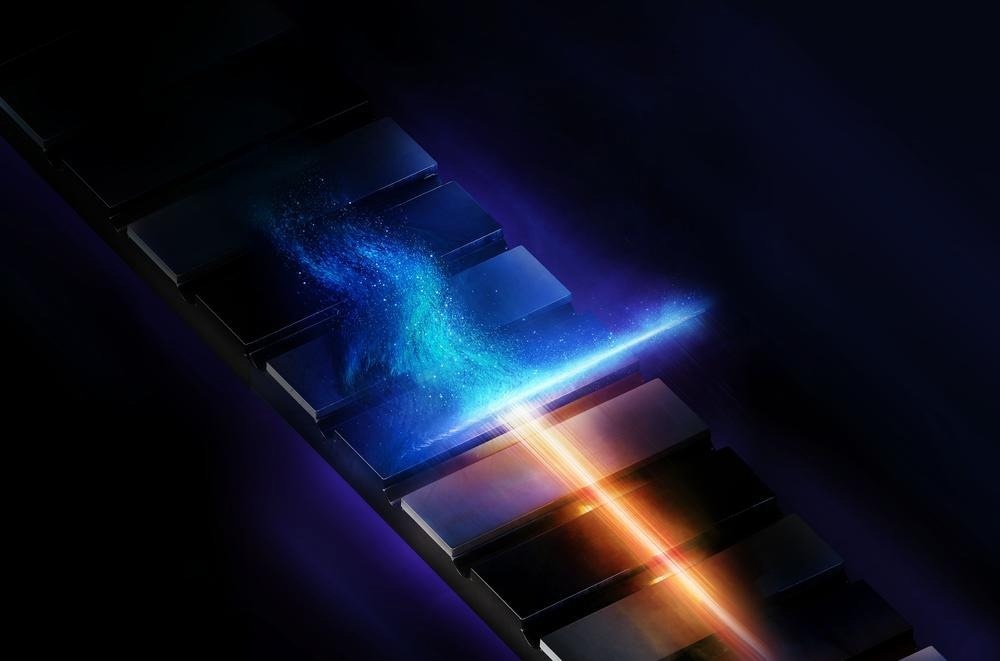Reviewed by Lexie CornerNov 26 2024
According to a study published in Nature Photonics, a research team at European XFEL and DESY made a significant achievement in X-ray science by producing unprecedented high-power attosecond hard X-ray pulses at megahertz repetition rates. This development expands the study of ultrafast electron dynamics and allows for non-destructive experiments at the atomic level.
 Highly accelerated electrons (blue cloud) are strongly compressed with the help of special beam optics (bright line in the center). This leads to very bright X-ray pulses (yellow) with pulse durations of only a few hundred attoseconds and powers in the terawatt range. Image Credit: European XFEL, Tobias Wüstefeld
Highly accelerated electrons (blue cloud) are strongly compressed with the help of special beam optics (bright line in the center). This leads to very bright X-ray pulses (yellow) with pulse durations of only a few hundred attoseconds and powers in the terawatt range. Image Credit: European XFEL, Tobias Wüstefeld
Researchers have demonstrated single-spike hard X-ray pulses with energies exceeding 100 microjoules and durations of a few hundred attoseconds. An attosecond is one quintillionth of a second, a timescale that allows scientists to detect even the fastest electron motions in matter.
These high-power attosecond X-ray pulses could open new avenues for studying matter at the atomic scale. With these unique X-rays, we can perform truly damage-free measurements of structural and electronic properties. This paves the way for advanced studies like attosecond crystallography, allowing us to observe electronic dynamics in real space.
Jiawei Yan, Study Lead Author and Physicist, European XFEL
Traditional methods for generating ultra-short hard X-ray pulses required significantly reducing the electron bunch charge to tens of picocoulombs, which limited pulse energy and practical applications.
At the European XFEL, the team developed a self-chirping approach that leveraged the combined effects of electron beams and specific beam transport systems. This method enables the creation of attosecond X-ray pulses with terawatt-scale peak power and megahertz repetition rates, without reducing the electron bunch charge.
By combining ultra-short pulses with megahertz repetition rates, we can now collect data much faster and observe processes that were previously hidden from view. This development promises to transform research across multiple scientific fields, especially for atomic-scale imaging of protein molecules and materials and investigating nonlinear X-ray phenomena.
Gianluca Geloni, Group Head, Simulation of Photon Fields, Group Head, Simulation of Photon Fields
Journal Reference:
Yan, J. et. al. (2024) Terawatt-attosecond hard X-ray free-electron laser at high repetition rate. Nature Photonics. doi.org/10.1038/s41566-024-01566-0